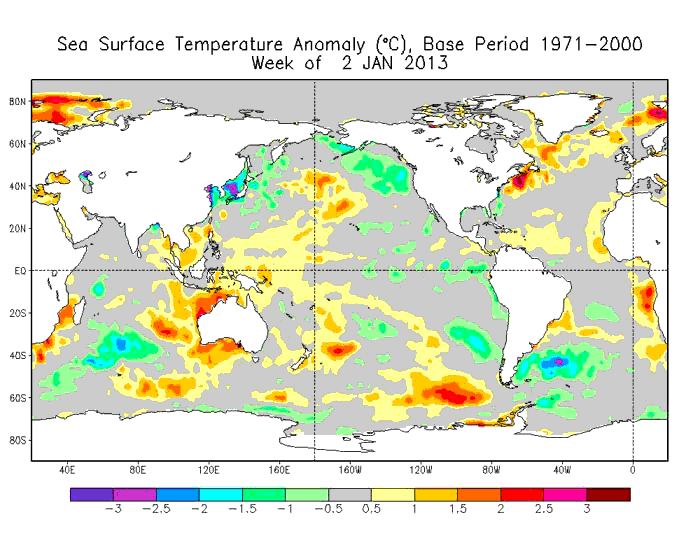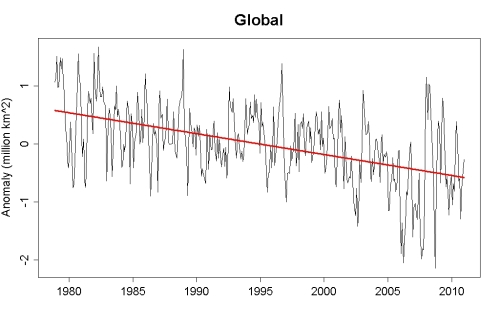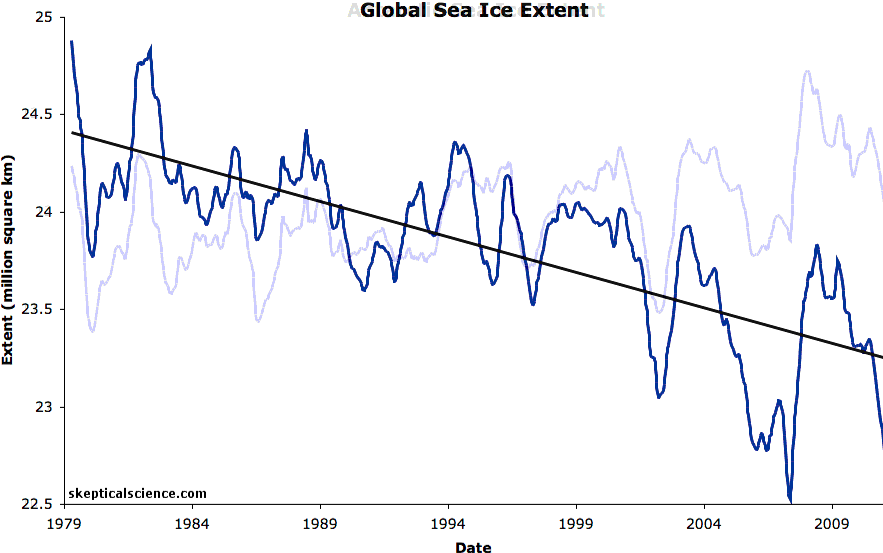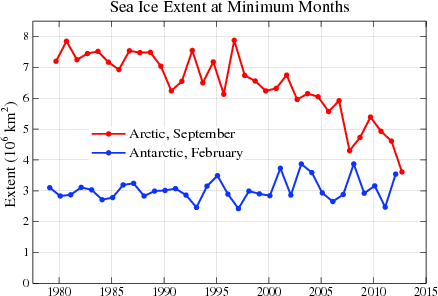Weatherman2020
Diamond Member
NOAA recently put together some time lapse satellite photography using photos taken every week for the last 25 years by polar orbiting satellites. It provides a stunning look at the true extent of the Arctic ice loss over just the last two and a half decades. The ice there was even thicker and larger in the 1950s than in the 1990s, much more so, according to data from shipping and Naval records.
The Arctic is warming at several times the rate as the rest of the planet. This has major consequences for many Northern Hemisphere weather systems and patterns, as we have witnessed here in America in recent winters. The Arctic Ice Cap has already shrunk enormously in extent and thickness. The northern glaciers in Alaska and Asia are melting faster. Greenland is melting faster and scientists have determined that it has lost 9 trillion tonnes of ice in the last century, with most of the loss in the last 30 years, adding to sea level rise.
This article explains it all pretty clearly and contains two short NOAA videos about the ice at the North Pole. Be sure to watch at least the first video showing the ice over time.
The Arctic Ice is melting faster than the global average
The Marshalltown
BY TAYLOR AUSTEN
12 JANUARY 2016
The climate change in the Arctic has been at least twice as fast as the global average. So Arctic Ocean ice levels are in decline.
Now, US scientists prepares a new time laps to show how large ice packs which survive more than one summer are becoming less frequent occurrences.
The areal extent, concentration and thickness of sea ice in the Arctic Ocean and adjacent seas have strongly decreased during the recent decades, but cold, snow-rich winters have been common over mid-latitude land areas since 2005.
Each year sea ice in the Arctic Ocean builds up in the winter months and thin ice melts away during summer.
However, recently the change seems to be more dramatic. Old, multilayered icebergs are in decline and this visualization by the National Oceanic and Atmospheric Administration (NOAA) makes everything clear related to how the Arctic is "warming faster than the global average."
Using satellite data, the video describes the decline of nine years or older ice packs from 1990 to 2015.
Sea ice in the Arctic can be characterized by areal extent, thickness, age, and movement.
The conditions on top of sea ice, such as the snow thickness and melt ponds, are alsoimportant. The oldest packs, shown in white, can be seen to deplete dramatically around 2008 amid the darkest blue seasonal ice.
According to the NOAA 2015 Arctic Report Card, last winter, - 'The spread of sea ice in the area was "the smallest on record" and the "melt season was 30 to 40 days longer than average" in the northern regions of Greenland'.
"Since the 1980s, the amount of multiyear ice has declined dramatically. In 1985, 20 percent of the ice pack was very old ice, but in March 2015 old ice only constituted three percent of the ice pack," it added.
The ice retreat is having an impact on wildlife, said the NOAA, changing the habitat for creatures such as walruses, who have to travel further for mating or birthing areas.
In September 2015, NASA reported that sea ice concentration was the fourth lowest on record since observations from space began.
Great news. Let me know when crocodiles and palm trees return to Alaska.










